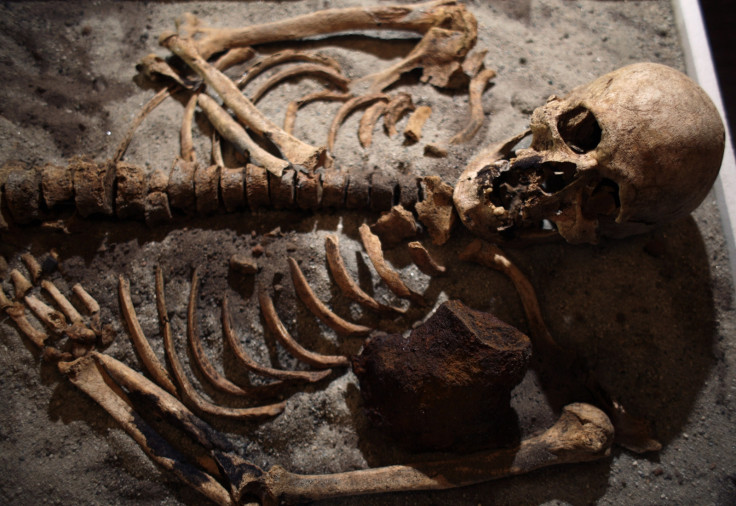Medieval 'Vampire Grave' Discovered in Bulgaria
A 13th-century skeleton with an iron stake driven through its chest has been found in southern Bulgaria.

A 13<sup>th-century skeleton with an iron stake driven through its chest has been found in southern Bulgaria.
It was discovered by the archaeologist known as "Bulgaria's Indiana Jones".
"We have no doubts that once again we're seeing an anti-vampire ritual being carried out," said Professor Ovcharov in a Telegraph report. He explained that the metal was driven through the corpse to stop a "bad" person from rising from the dead and terrorising the living.
"Often they were applied to people who had died in unusual circumstances – such as suicide."
The human remains, believed to be of a man between the ages of 40 and 50, had a heavy piece of ploughshare – an iron rod used in a plough – piercing its chest. The left leg below the knee had also been removed and left beside the skeleton.
The purpose of the metal was to keep the corpse from rising from the dead and disturbing the living, Ovcharov explained. "The ploughshare weighs almost two pounds and is dug into the body into a broken shoulder bone. You can clearly see how the collarbone has literally popped out."
Professor Nikolai Ovcharov specialises in excavating ancient civilisations and said that he had made the discovery while digging at the ruins of Perperikon, an ancient Thracian city located in southern Bulgaria, close to the border with Greece.
The city, inhabited since 5000 BCE but was only discovered 20 years ago. It is thought to be the site of the Temple of Dionysius – the Greek god of wine and fertility. Among the finds at the site are a hilltop citadel, a fortress and a sanctuary, as well as a series of "vampire graves".
Professor Ovcharov also discovered the remains of woman and a young child, laid out to create an image of the Virgin Mary and child. He said that this was done in an attempt to ward off the plague, which had started to ravage medieval populations.
This is the third discovery of a vampire's grave in Bulgaria, and bears a strong similarity to two previous graves discovered in 2012 and 2013 in the Bulgarian seaside town of Sozopol, 200 miles to the east of Perperikon, which were nicknamed "the twin vampires of Sozopol".
According to archaeologist Dimitar Nedev, head of the Sozopol Archaeological Museum, who found the skeletons, these burials are evidence of protection against vampirism — the belief that the dead would leave their graves.
Bozhidar Dimitrov, who runs the National History Museum in Sofia, has said that about 100 such skeletons have been uncovered in Bulgaria.
© Copyright IBTimes 2025. All rights reserved.






















